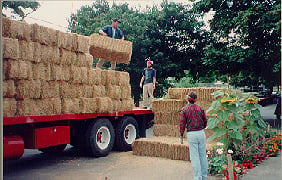
Our household of 2 adults and three children obtained all our household hot water from a composting greenhouse we constructed in Portland, Oregon in 1994. It provided hot water at a temperature of 90-130 degrees (Fahrenheit) continuously until it was dismantled 18 months later. We used the space to grow several species of mushrooms and to house plants from our garden during winter.
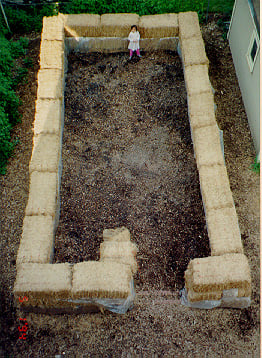
The greenhouse design was similar to inexpensive "tube" greenhouses. Outer dimensions were 16x30 feet. The foundation walls consisted of 3 courses of rye grass straw bales pinned together with 1/2 inch steel rebar. Bale size was 2 feet x 2 feet x 4 feet, giving two-foot thick walls along the base. Therefore inner dimensions were 12 feet wide by 26 feet long. Bales were stacked like bricks, as is typical of straw bale construction. A layer of 3 mil plastic film surrounded the bottom bales, separating the straw from a layer of wood chips on which the bales rested and the compost which filled the greenhouse about three feet deep inside (except for a 5 feet by 12 feet entry at one end). The roof consisted of 6 mil ultraviolet resistant plastic film supported on 20 foot arches of rebar spaced every 2 feet along the length of the structure. These arches were held rigidly into a 2 feet x 2 feet matrix with horizontal rebar spaced every 2 feet running the length of the structure. The straw bales on the sides and end walls were also covered with the same plastic film as the roof with a door framed out of lumber at one end. A single sheet of 32 feet wide by 32 feet long plastic covered the roof.
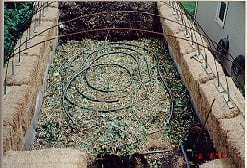
Two PVC 3/4 inch water lines ran underground from the house to the greenhouse. The cold water supply originated at the washer hookup cold line. Hot water returned from the greenhouse in an insulated line after circulating in the hot compost and entered the house plumbing at the washer hot water hookup. Therefore no modifications to the original house plumbing system were required. While the greenhouse heater was operative, the original hot water heater was turned off and its intake valve closed. Heat exchange occurred in the compost in which was embedded one hundred feet of coiled 1.5 inch internal diameter plastic hose. Compost mass totaled 3 feet deep, 12 feet wide, and 21 feet long, or approximately 28 cubic yards. It required replenishing several times during its lifetime because of continual slow decomposition.
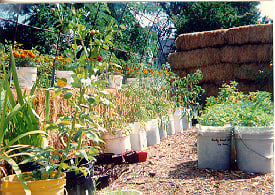
The total amount of hot water contained in the hose inside the compost (comprising a cylinder 100 feet long by 1.5 inch diameter) was 9.17 gallons. This (when mixed with appropriate cold water) was an adequate volume to take 3 quick showers without running out of hot water.
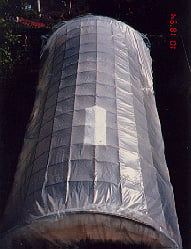
The compost biomass consisted of wood chips and other ground tree material run through a chipping machine. This material is delivered to our site free of charge from many tree service companies. We supplemented this primarily high-carbon matter with high-nitrogen matter from household waste such as garden debris, kitchen compost, and manures. Eventually, when the greenhouse was dismantled to reclaim our back yard as a garden area, we had enough finish compost to cover our entire yard 8 inches deep. Needless to say, we have a fabulous garden from this new soil fertility.